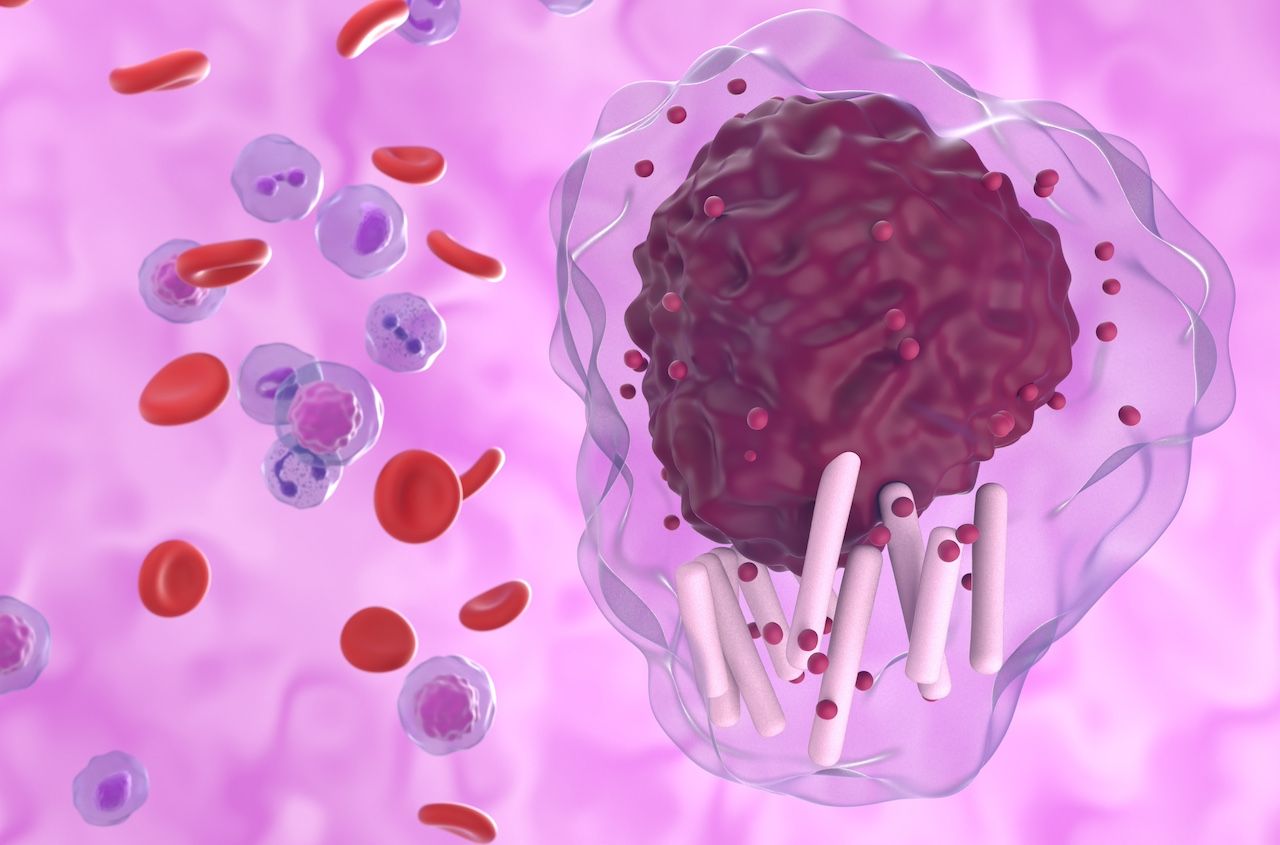News
Article
CLL Cells Found to Secrete IL-9, Hindering Cytotoxic T-Cell Function
Author(s):
Investigators say the findings could lead to new therapeutic targets.
New research is shedding light on 1 way chronic lymphocytic leukemia (CLL) cells are able to evade the body’s natural defenses. The report found that interleukin-9 (IL-9) secreted by leukemic cells suppresses the antitumor effects of cytotoxic T cells (CTLs). The study was published in Cell Death & Disease.
The study authors noted a clear undrestanding that cancer cells employ tactics to evade the immune system.
“To escape immune surveillance, neoplastic B cells of hematologic malignancies implement strategies that shape T lymphocytes of the tumor microenvironment (TME) toward an exhausted phenotype, characterized by increased expression of exhaustion markers and inability to produce adequate levels of immune-activating cytokines, which both contribute to T-cell dysfunctions,” the authors wrote.
CLL cells in blood flow | Image credit: Laszlo-stock.adobe.com

In CLL, they added, the immune synapse (IS)—a specialized structure that forms at the interface between a target cell and a lymphocyte—is defective.
“CLL cells disable CTLs through interactions mediated by immunosuppressive surface ligands such as the PD-1 ligand (PD-L1), which, by activating the inhibitory cognate receptors on CTLs, hamper IS formation and polarized lytic granule secretion into the synaptic cleft to allow for selective tumor cell killing,” they wrote.
CLL cells secrete cytokines and chemokines in the TME that support the formation of cancer cells. Those include IL-9, the release of which has been linked with aggressive cases of CLL.
Still, the authors said the CLL cell secretome is not yet well understood.
“The characterization of CLL-secreted factors as indirect inhibitors of IS formation might help in developing therapeutic approaches to reactivate ant-tumoral CTL activities in CLL,” they wrote.
To better understand the CLL secretome, the investigators took healthy CTLs and cultured them in media conditioned by leukemia cells taken either from patients with CLL or from an Eμ-TCL1 mouse model.
“We found that healthy CTLs cultured in media conditioned by leukemic cells from CLL patients or Eμ-TCL1 mice upregulate the exhaustion marker PD-1 and become unable to form functional ISs and kill target cells,” the authors said.
They said the defects were especially notable when the leukemic cells used to condition the media lacked the proapoptotic adapter p66Shc, which they noted has previously been found to be associated with disease aggressiveness in CLL. They added that IL-9 and IL-10 are both overexpressed in the cells of patients with CLL and inversely correlated with residual p66Shc. IL-9 enhances PD-1 expression and suppresses the function of CTLs.
"The protumoral activity of IL-9 involves its ability to promote homing chemokine secretion by stromal cells of lymphoid organs, thereby attracting CLL cells to the pro-survival lymphoid niche,” they wrote. “Here we found that IL-9 secreted by CLL cells also participates in their escape from CTL-mediated killing by hampering IS formation in CTLs.”
They also found a link between abnormal IL-9 levels and uncontrolled secretion by T helper 9 (Th-9) cells, which the authors said suggests “that CLL and Th-9 cells potentially cooperate to shape the TME by suppressing CTLs.”
The investigators noted that CLL cells do not only secrete protumoral cytokines. IL-15, for instance, has antitumoral activity, they said, and patients with low levels of IL-27 tend to have more aggressive disease.
“On the other hand, our data highlight IL-9, which is overexpressed in CLL patients with aggressive disease presentation, as a key protumoral cytokine that shapes the TME not only to promote leukemic cell accumulation and survival, but also to help them evade elimination by CTLs,” they wrote.
The authors said their findings could potentially open the door to new therapeutic strategies to treat patients with CLL.
Reference
Boncompagni G, Tatangelo V, Lopresti L, et al. Leukemic cell-secreted interleukin-9 suppresses cytotoxic T cell-mediated killing in chronic lymphocytic leukemia. Cell Death Dis. 2024;15(2):144. doi:10.1038/s41419-024-06528-6




